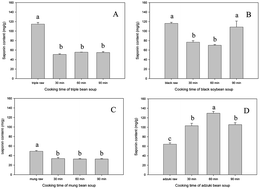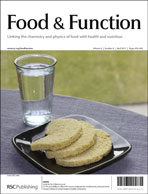Active substances and in vitro anti-diabetic effects of a traditional folk remedy Bian-Que Triple-Bean Soup as affected by the boiling time
Abstract
Bian-Que Triple-Bean Soup (Bian-Que San Dou Yin in Chinese) is a folk remedy which has been used for thousands of years in the practices of traditional Chinese medicine. The objectives of the current study were aimed to determine in vitro anti-diabetic effects and to find out the optimal cooking time for retaining active substances. α-Glycosidase in vitro inhibitory capacities and DPPH free radical scavenging capacities, and contents of active substances including total phenolics,


 Please wait while we load your content...
Please wait while we load your content...